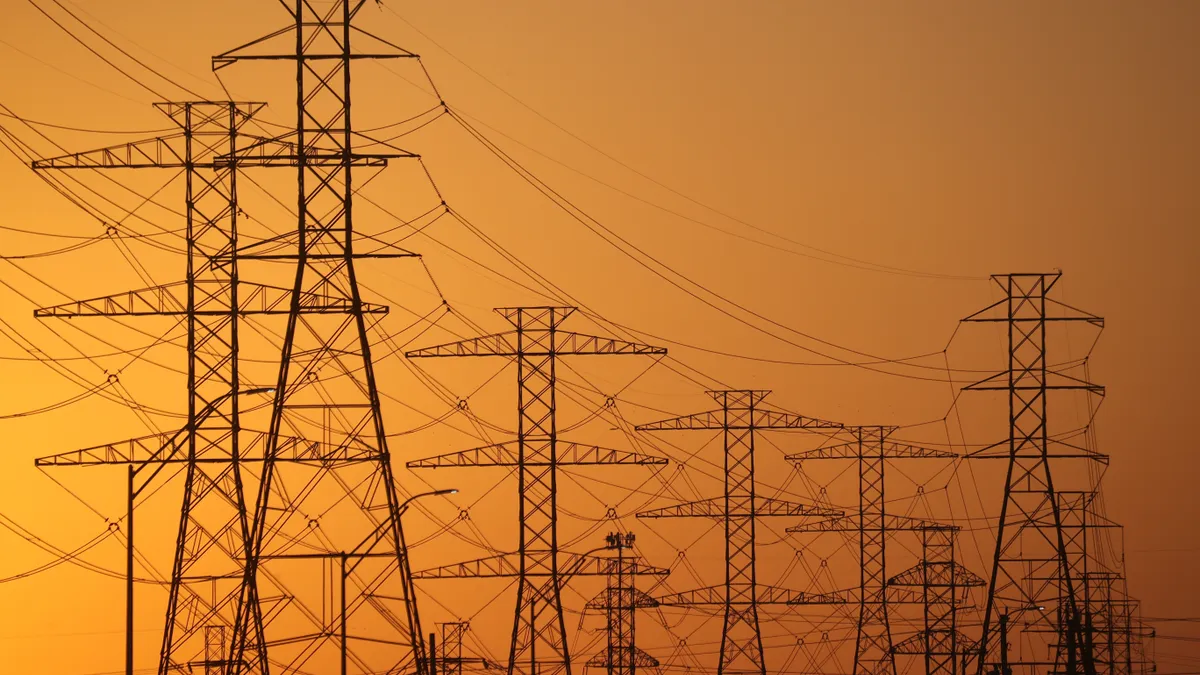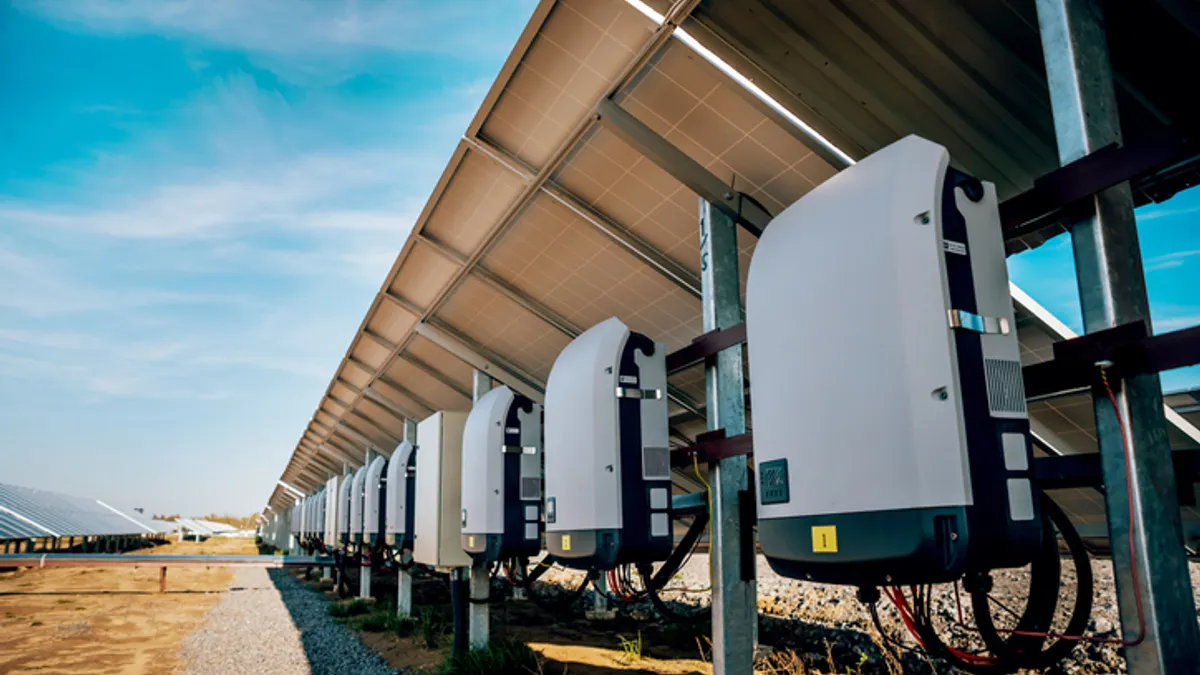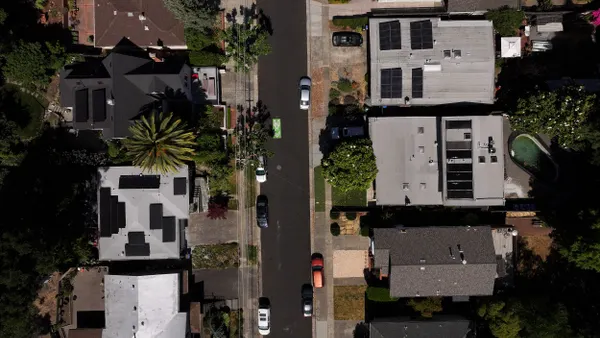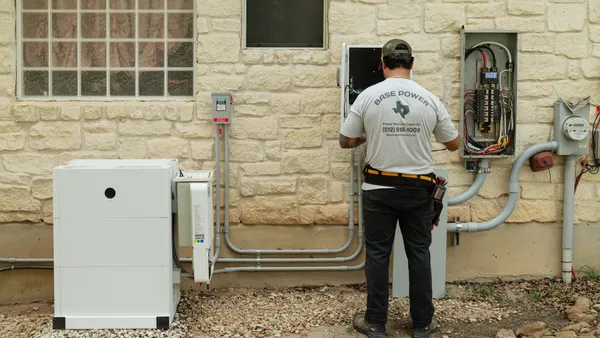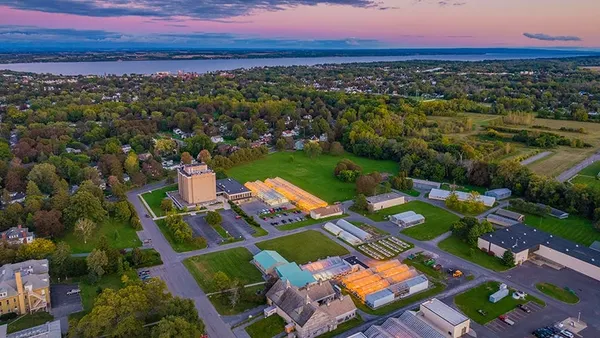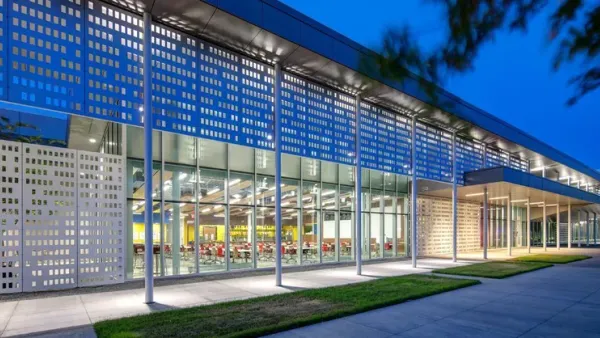The utility industry is getting older, with the age showing from the sector workforce to the infrastructure and the business models, while market demands are evolving rapidly. And survey after survey (and, survey) has shown that the industry is aware, and struggling to keep pace.
The last three Utility Dive industry surveys have placed those areas as the top concerns for the sector. And over those three years, concerns over the utilities' aging workforce and infrastructure has worked its way up the ranks to the dubious top slot.
But a new survey from the consultancy Black & Veatch finds that the problem may be even worse than thought.
The firm's report, focused on the “smart city” concept of integrated and efficient utilities and services, finds expectations for when those ideas will materialize are slowing. Utilities are ramping up spending, but many report they need further expansions of their budgets. And their workforces, on up to the CEOs, are aging and holding onto antiquated ideas.
“Utilities are very resistant to change,” said Dave Hulinsky, utility telecom director in Black & Veatch’s telecommunications business. “We have a lot of utilities with a senior workforce, and they're used to a certain type of technology. What we've seen over the last 10 to 15 years, is they've been resistant … from an [investor-owned utility] perspective, it's typically mandates, governments, and regulators that are driving this evolution.”
But it is also an evolution that can be mutually beneficial, respondents to B&V's survey acknowledged. Asked to identify the primary drivers behind smart city initiatives, municipality and government officials responded with efficiency and reduced costs. The utility top choice: a strong return on investment.
A key to the evolution of smarter cities will be finding ways to align those values, said the report's authors.
“The interplay between the cities and utilities has evolved to a state where digital communications and communications platforms allow value to be extracted from each other,” said Ed Sutton, principal consultant and project manager in Black & Veatch’s telecommunications business.
From more efficient street lighting to smart buildings, for example, Sutton said the key will be finding “how that interplays with the value the utility can find in demand response and efficiency. The evolution is understanding the value each brings to the table and balancing the scale and invectives to make the overall community that much more efficient.”
You can find the firm's 2016 Smart City/Smart Utility report here.
The future: Not as close as it used to be
There is little doubt that the transformation of the utility sector is already underway. New York's sweeping Reforming the Energy Vision proceeding and California's investigation of distributed resources are directing holistic reviews of their respective utility sectors. Cities from Las Vegas to Rochester, Minn., are trying to switch to 100% renewable resources. And energy efficiency programs are targeting increasing savings across the country.
Even so, the approach appears to be fractured, according to B&V.
“You've got a segmented approach across a utility sector,” said Hulinsky. “Everyone has certain ideas. You may have vision at the top, but it segments as it goes down.” A holistic view is necessary, he said, as utilities transform from centralized generation to distributed resources and plug-and-play models for third-party services.
Black & Veatch identified a key change from their 2015 report to the 2016 iteration – respondents still see the integrated, holistic, smart utility and city model as a transformative idea. But they now believe it will take longer to arrive.
“It’s notable that fewer respondents this year believe smart cities will become a widespread reality in the United States in the next one to five years. More believe it will be in the six-to-10-year or 11-to-15-year timeframe,” the report reveals. “This is likely because as more municipalities move beyond the hype to build master plans and consult with stakeholders, they realize the need for more infrastructure, resources and funding than they originally contemplated.
But on the positive side: “The stronger focus on planning also indicates that smart city programs are starting to be viewed from a more holistic perspective, with larger, more integrated programs that are more complex than initial pilot projects.”
But infrastructure takes time to develop, as do the business models to pay for it. And while B&V's report found more than 90% of government and municipal respondents say they can see the potential, “more than half of respondents say their organization does not really understand the smart city concept.”
Paying for the transformation
The basic question of “who pays for all this” is complicated by the relative newness of the business models.
“The overall cost and return on investments are not broadly understood,” the report found. “Theseare technology investments that often require pilot projects and testing while competing for funds against more mundane capital and operating projects. Siloed organizations often cannot look beyond their own department budgets.”
While some cities are pursuing a more integrated and holistic approach to planning, budgetary constraints mean ad hoc measures are more common. Cities with municipal utilities can find “issues and opportunities associated with smart grid and smart cities are often co-mingled, with the initiatives competing for the same funds..”
Of utilities surveyed, almost 40% said they will spend $5 million or less over the next two to three years on upgrading or building new communications infrastructure. And B&V found that almost 13% of utilities that are investing in their communications infrastructure will also require a greater than 25% increase in their operations and maintenance budgets.
“The overall theme we're seeing, and the fundamental platform, is this communications infrastructure,” said Sutton. “A lot of people are recognizing the potential applications, but in order for this to fundamentally work you need a communications network to plug into and overtime scale up.”
Of utilities surveyed, almost 40% said they will spend $5 million or less over the next two to three years on upgrading or building new communications infrastructure. And B&V found that almost 13% of utilities that are investing in their communications infrastructure will also require a greater than 25% increase in their operations and maintenance budgets.
“The overall theme we're seeing, and the fundamental platform, is this communications infrastructure,” said Sutton. “A lot of people are recognizing the potential applications, but in order for this to fundamentally work you need a communications network to plug into and over time scale up.”




